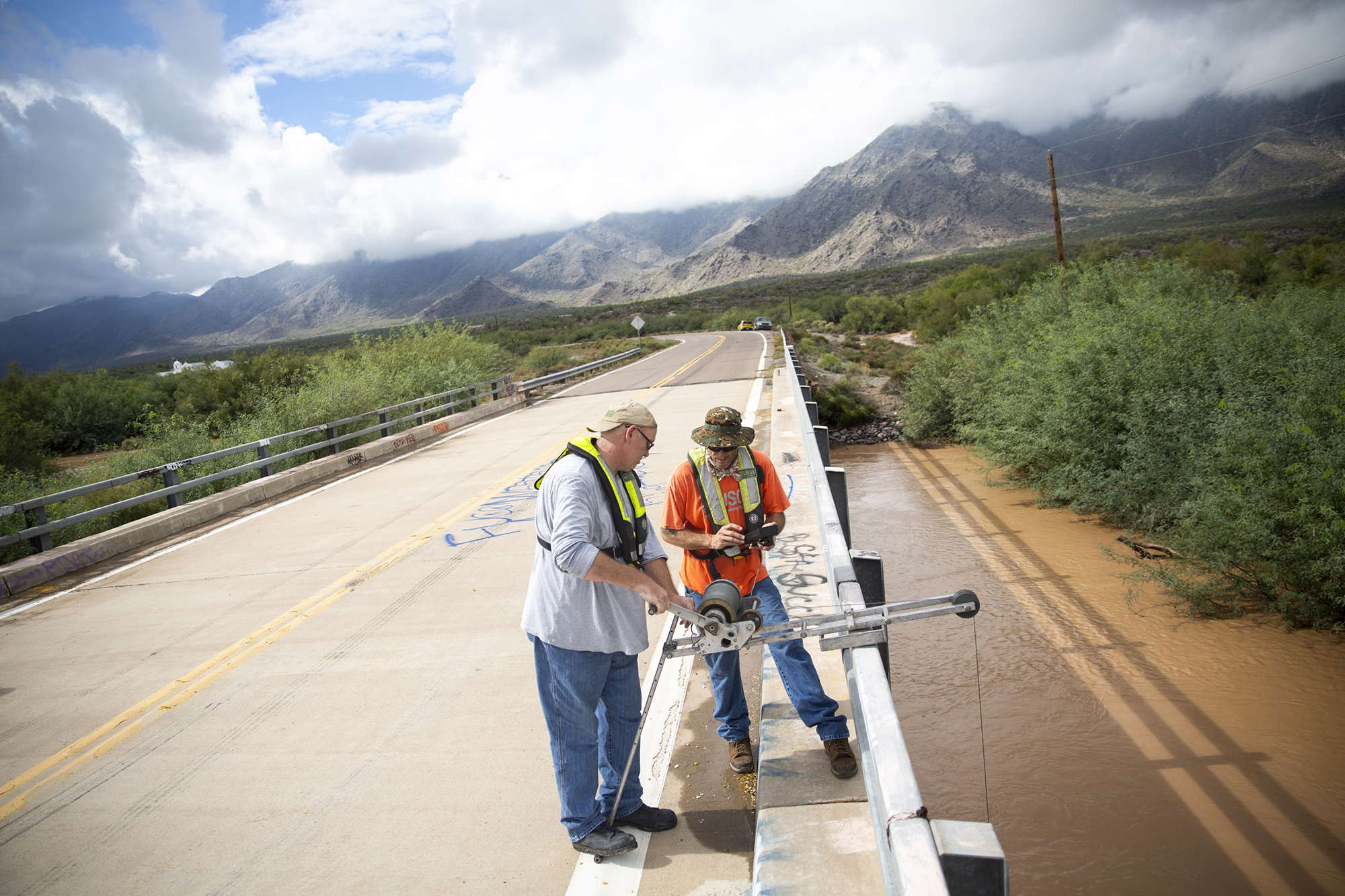
Hydrologist Ken Fossum (left) and hydrologic technician Arthur Rees, who work for the U.S. Geological Survey in Tempe, measure the depth and velocity of water from a bridge near the Laveen neighborhood of southwest Phoenix. (Photo by Anya Magnuson/Cronkite News)
Hydrologists fan out across metro Phoenix to gauge flooding left in Rosa’s wake
By Anya Magnuson and Bryce Newberry/ Cronkite News |
PHOENIX – Scientists with the U.S. Geological Survey scrambled Tuesday and Wednesday to measure flooding in waterways across metro Phoenix, providing data to help the National Weather Service better forecast potential floods and local agencies understand how high water could rise in the future.
On Wednesday, a two-man crew was sent to the usually dry Santa Cruz River near Laveen, which was flowing rapidly. Hydrologic technician Arthur Rees and hydrologist Ken Fossum measured the water’s depth and velocity at multiple points. At its peak, the water was 8.5 feet deep and moving at 2,700 cubic feet per second. They described the flow as moderate but noted that the river has been dry for nearly a decade.
“It (Tropical Storm Rosa) dropped a lot of water but over sort of a longer period of time. And that creates sort of larger floods,” Rees said.
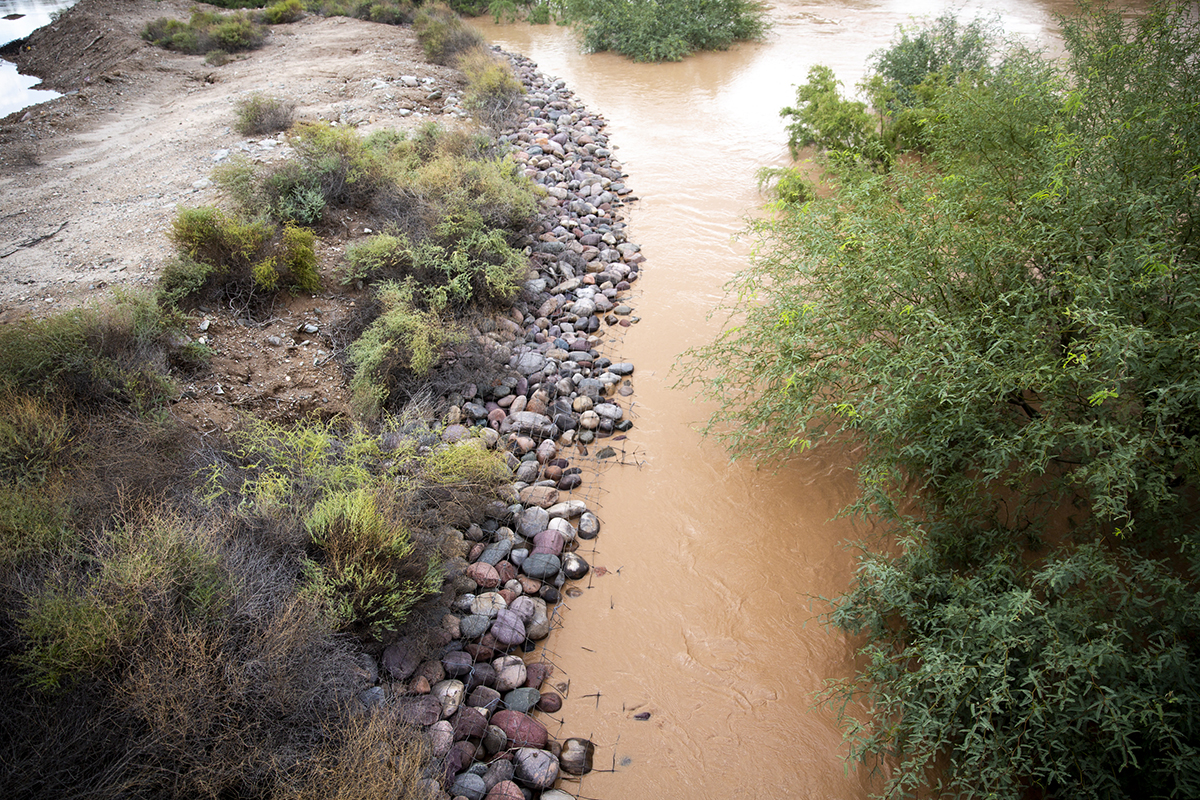
Water flows in the usually dry Santa Cruz River near Laveen on Wednesday after days of heavy rain. (Photo by Anya Magnuson/Cronkite News)
Before human settlement and climate change, the Santa Cruz, which begins in the Mexican highlands near Nogales, flowed north to its confluence with the Gila River near Laveen. The novelty of the flowing river captured the attention of passersby Wednesday, many of whom stopped to take photos.
The area hasn’t seen this much water for nearly 10 years, the hydrologists said. Even so, Rosa won’t pull Arizona out of a 20-year drought.
“It’s one storm, so you kind of need a trend in order to say that you’re out of the drought,” Rees said.
CORRECTION: An earlier version of this story and a caption incorrectly identified hydrologic technician Arthur Rees. The story has also been updated with accurate data on the water’s depth and velocity as measured at its peak. Clients who used earlier versions of this story are asked to run the correction that can be found here.
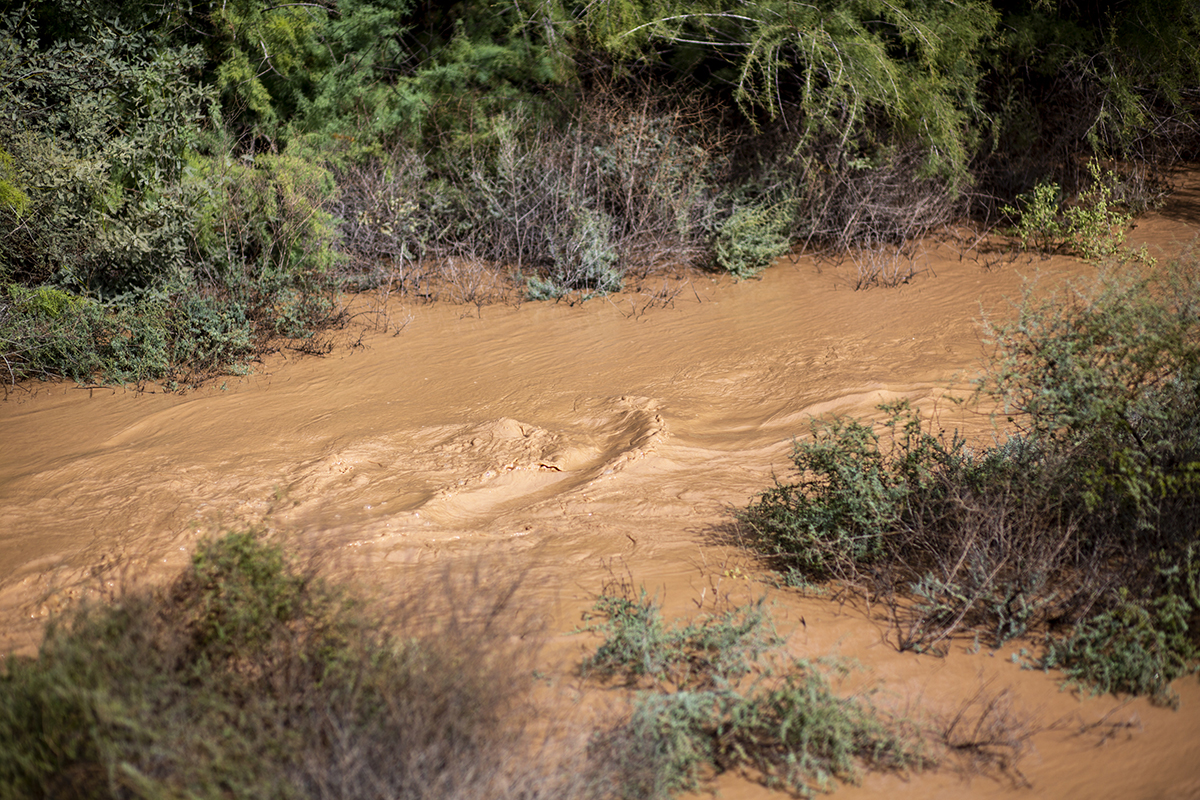
Water spreads out over the desert near Laveen, a Phoenix neighborhood at the western tip of South Mountain. (Photo by Anya Magnuson/Cronkite News)
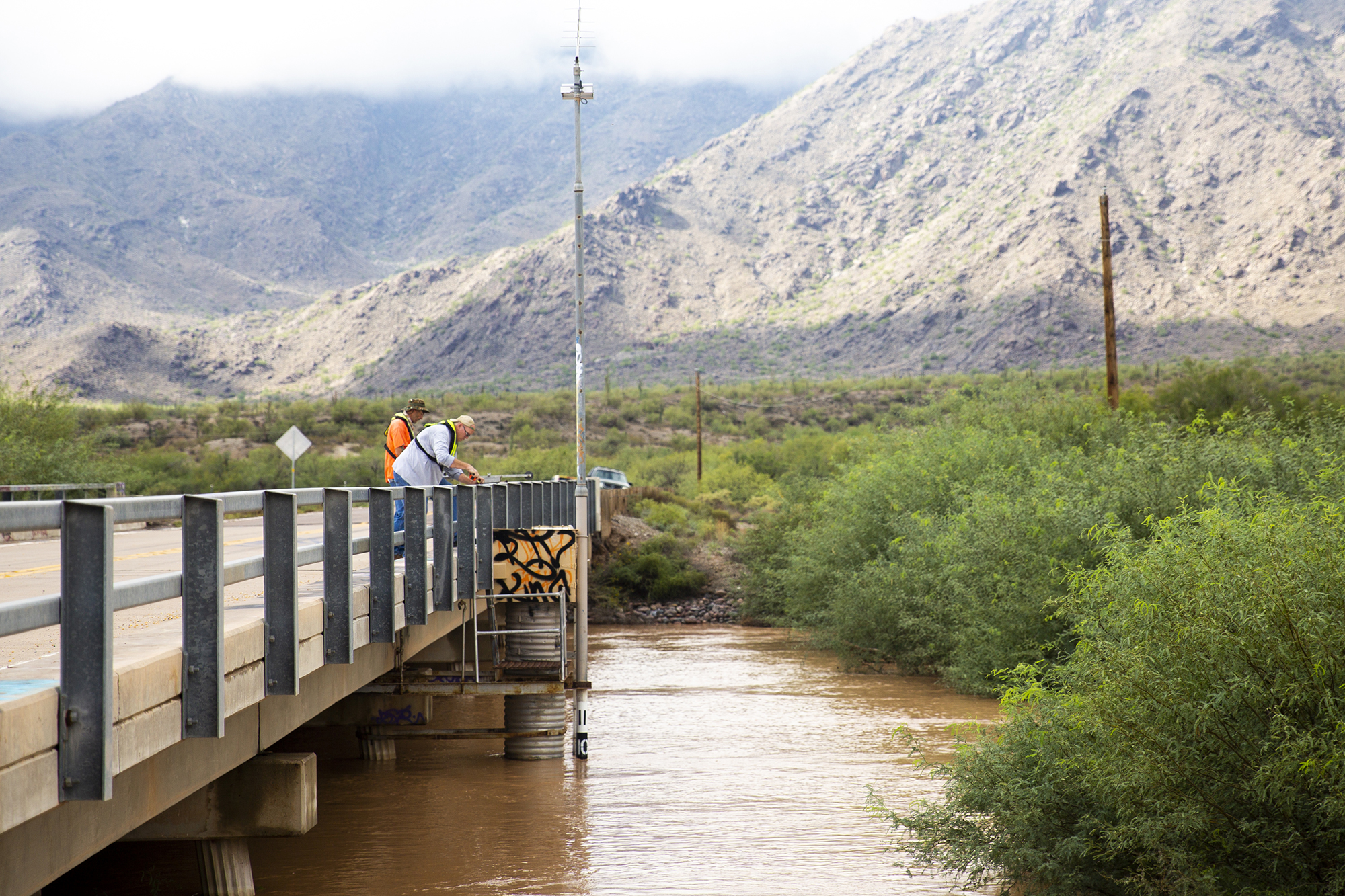
Fossum and Rees were among the scientists the U.S. Geological Survey dispatched this week to measure depth and velocity of runoff in waterways across the Phoenix area. The data helps National Weather Service develop flood forecasts. (Photo by Anya Magnuson/Cronkite News)

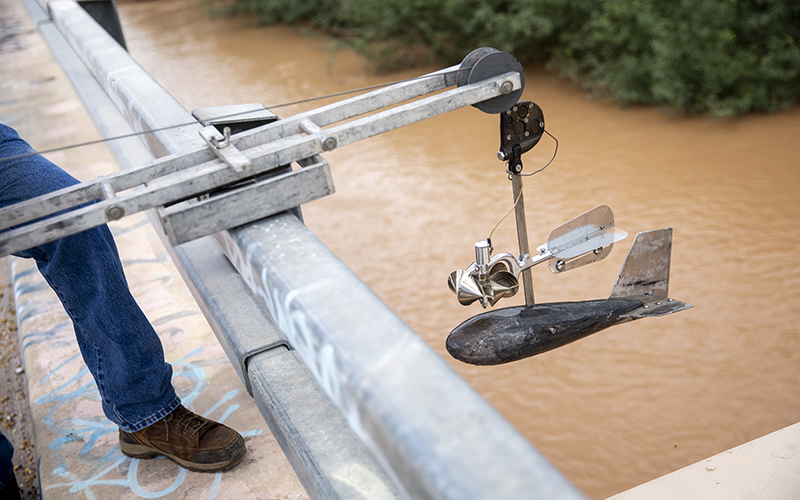
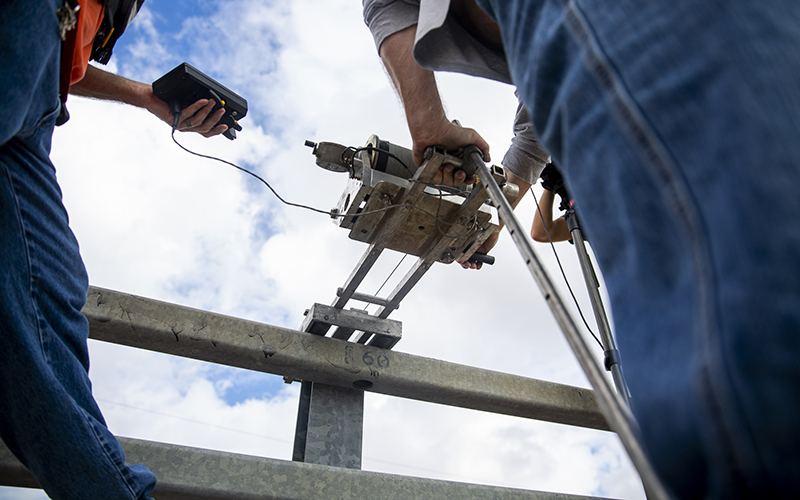
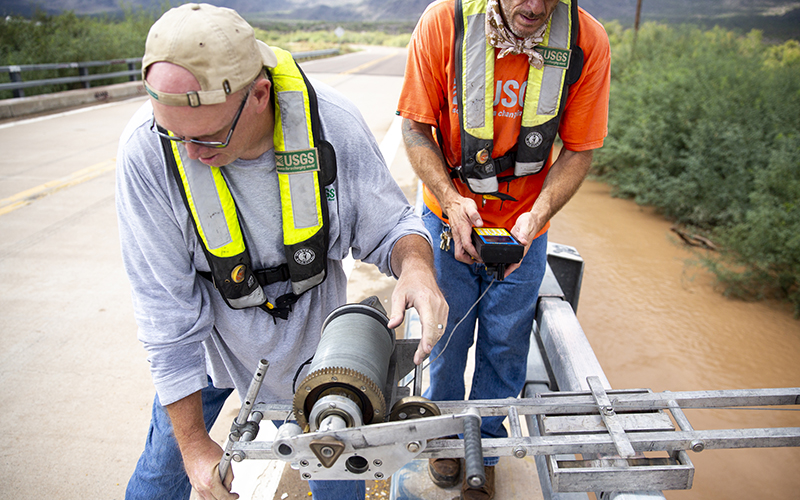

Leave a Comment
[fbcomments]